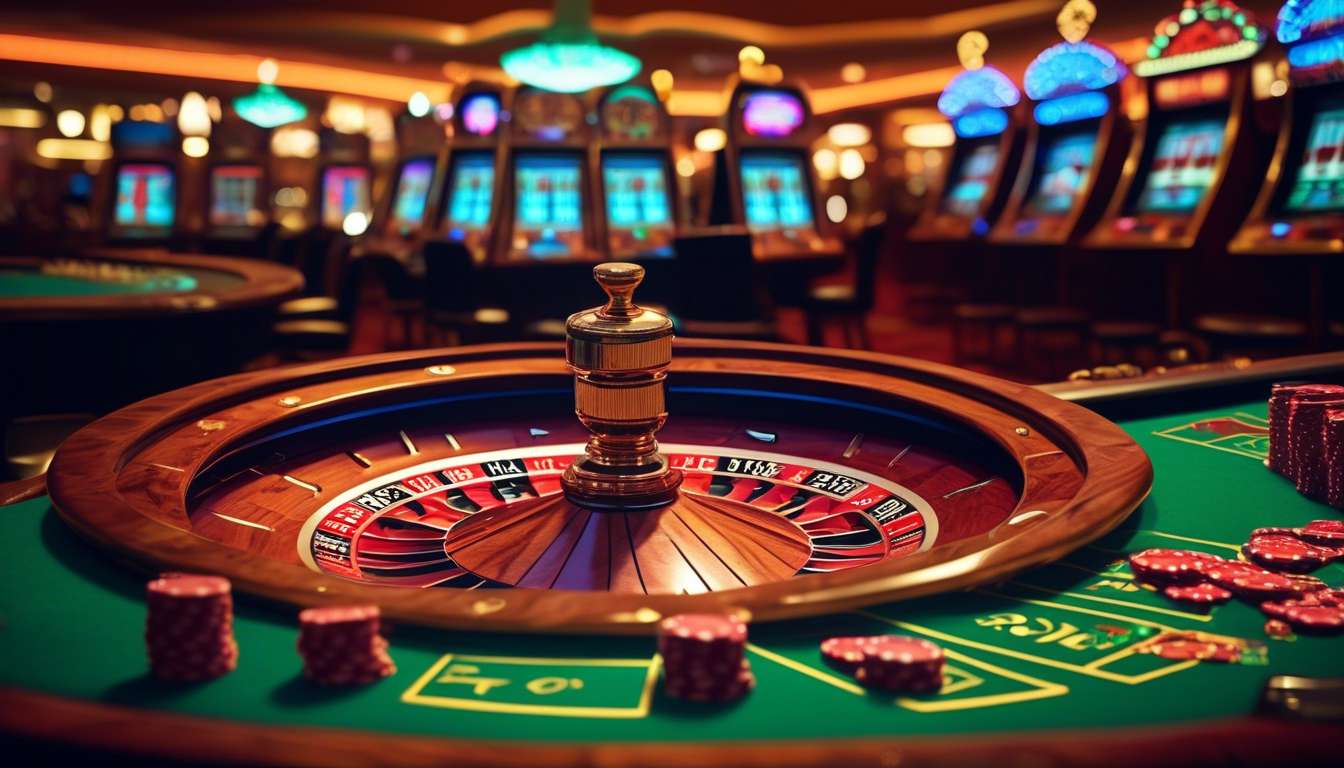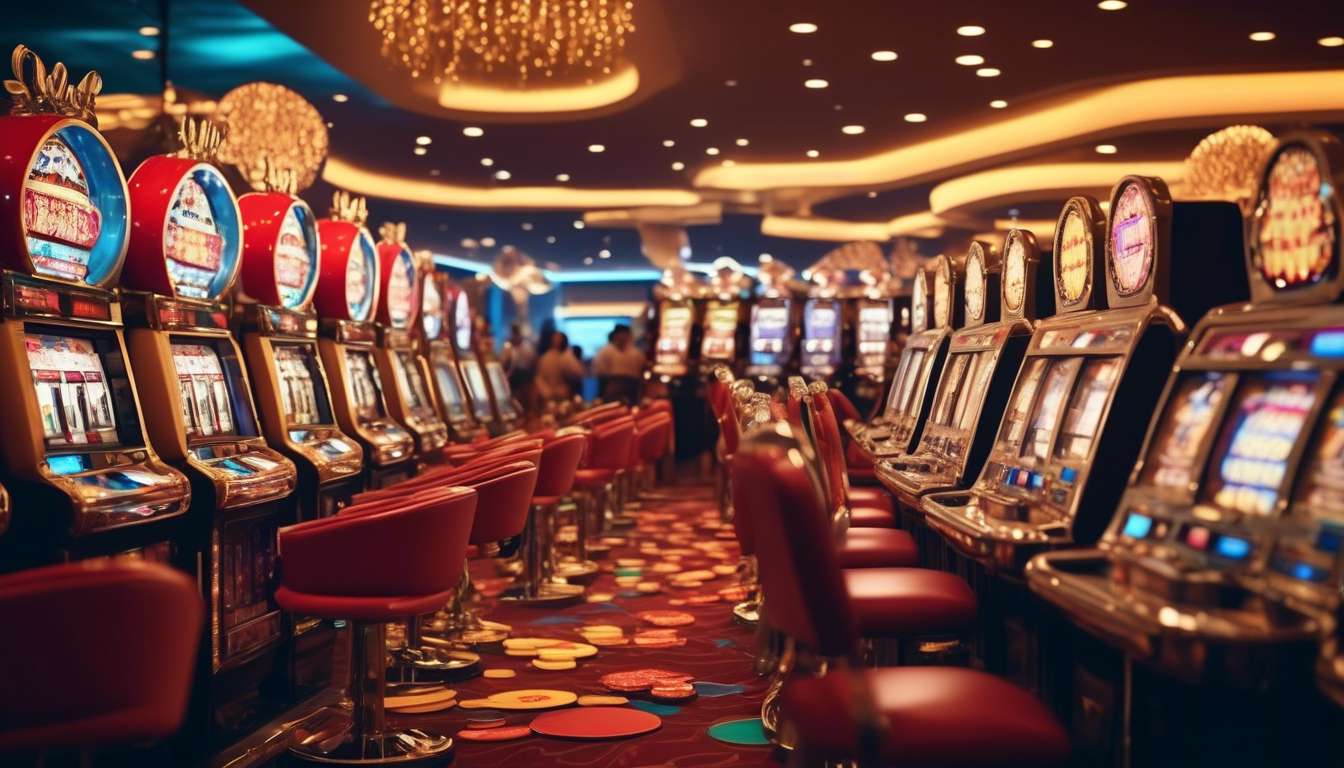As passionate gamers and industry enthusiasts, we often find ourselves diving into the world of online casinos and digital gaming platforms, where terms like Return-to-Player (RTP) rates frequently emerge. These figures, often nestled in the fine print of game descriptions, hold significant sway over our gaming experiences, yet many of us overlook their importance.
Understanding RTP rates is crucial as they directly affect our long-term gaming outcomes and financial returns. Essentially, RTP is a percentage that indicates how much of the total wagered money a game will pay back to players over time.
By grasping the nuances of RTP, we can make more informed decisions about which games align with our strategic preferences and budgetary constraints.
As we delve deeper into this topic, we aim to demystify the complexities surrounding RTP rates and highlight why they are a critical factor in shaping our gaming adventures.
Importance of RTP Rates
Return-to-Player (RTP) rates are crucial because they directly influence a player’s potential winnings and overall gaming experience. When we gather around a game, we want to feel that our chances are fair, and that’s where RTP comes in.
RTP Explained:
- It’s the percentage of all the wagered money a slot machine or casino game will pay back to players over time.
- A higher RTP means a lower house edge, making the game more appealing to us.
Impact on Gaming Experience:
We all know that feeling of excitement when the odds seem just right. The RTP doesn’t just inform us about potential returns; it shapes our entire gaming experience.
- When the house edge is lower, we feel more engaged and included.
- Knowing that the game isn’t just rigged for the house to win enhances our enjoyment.
- This sense of belonging and fairness makes the gaming experience more fulfilling.
Conclusion:
When choosing our next gaming adventure, it’s important to keep an eye on those RTP rates for the best experience possible.
How RTP Rates are Calculated
To understand how RTP rates are calculated, we first need to dive into the underlying mechanics of wagers and payouts.
When we place a bet, a portion of our wager contributes to the Return-to-Player (RTP) rate, while the rest forms the House Edge. The RTP rate represents the percentage of wagered money a game returns to players over time.
For example:
- If a game has an RTP of 95%, it means that for every $100 wagered, we can expect to receive $95 back, on average, over many rounds.
Calculating RTP involves analyzing the game’s design, including:
- Rules
- Odds
- Payout structures
Game developers use mathematical models to ensure that the RTP aligns with the desired House Edge, ultimately shaping our gaming experience.
By understanding RTP, we’re empowered to make informed choices, fostering a sense of community among us players who seek fair and enjoyable gaming experiences.
Let’s embrace this knowledge and enhance our time together in the gaming world.
Impact on Gaming Experience
Understanding Return-to-Player (RTP) Rates
Understanding how return-to-player rates influence our gaming choices can significantly enhance the enjoyment and fairness of our experiences. When we know the RTP of a game, we’re better equipped to gauge the potential return and adjust our expectations.
Key Benefits of High RTP:
- A higher RTP means a lower house edge.
- It often results in a more rewarding gaming experience for players.
- Focusing on games with favorable RTP rates can boost confidence and engagement, knowing the odds are slightly more in our favor.
Fostering Community Through RTP Knowledge
Our shared gaming experiences become richer when we consider RTP. It fosters a sense of community among us as we exchange insights and strategies to maximize wins. This collective knowledge not only amplifies our enjoyment but also strengthens the bond between us.
Achieving Fair Play and Memorable Gaming
We all seek fair play and exciting moments, and understanding RTP helps us achieve that. Let’s embrace this information to create more memorable and equitable gaming adventures together.
Different RTP Rates Across Games
Understanding RTP in Gaming
Different games offer varying RTP rates, making it essential for us to compare them to find the most advantageous options. By understanding these differences, we can make informed choices that enhance our gaming experience.
What is RTP?
RTP, or return-to-player rate, represents the percentage of wagered money a game returns to players over time. Higher RTP rates mean a lower house edge, which can potentially lead to more significant gains for us in the long run.
Recognizing Games with Better Returns
In our shared gaming community, it’s crucial to recognize which games offer better returns. For example:
- Classic table games like blackjack and baccarat often have higher RTP rates compared to many slot machines.
Benefits of Choosing Games with Favorable RTP
When we come together to choose games with favorable RTP rates, we not only improve our individual experiences but also contribute to a more rewarding collective atmosphere.
Conclusion
Let’s ensure that our gaming adventures are both entertaining and beneficial by being mindful of the RTP variations across different games.
Strategies for Maximizing RTP
Maximizing RTP: Key Strategies
To maximize RTP, it is essential to focus on selecting games with high payout percentages and employing optimal betting strategies.
Choose Games with Favorable RTP Rates:
- By selecting games with high RTP, you increase your chances of winning.
- This choice minimizes the house edge, enhancing your overall gaming experience.
Bankroll Management:
- Set limits to ensure responsible and enjoyable play.
- Manage your bankroll wisely to mitigate the stress of potential losses.
Understand Game Rules and Strategies:
- Deep knowledge of game rules allows you to make informed decisions.
- Align your strategies with your gaming goals for better outcomes.
Select Games with Lower House Edges:
- Research different games and their RTP rates.
- Use this knowledge to make strategic choices.
Engage with the Gaming Community:
- Share insights and strategies with fellow players.
- Learn from others’ experiences to refine your approach.
- Celebrate successes together, boosting your sense of belonging in the community.
By adhering to these strategies, you can maximize your RTP and enjoy every gaming moment!
RTP Rates vs. House Edge
When comparing RTP rates and house edge, we can better understand how these factors impact our potential winnings and overall gaming strategy.
RTP (Return-to-Player):
- Tells us the percentage of our wagered money a game is expected to pay back over time.
House Edge:
- Represents the casino’s advantage, indicating how much it expects to keep from our bets.
Together, these metrics shape our gaming experience, influencing our choice of games and our approach to play.
Benefits of Higher RTP and Lower House Edge:
- By choosing games with higher RTP rates, we’re more likely to enjoy a gaming experience where we feel engaged and valued, as our chances of winning increase.
- Conversely, a lower house edge means the casino has less advantage over us, further boosting our confidence.
Understanding both RTP and house edge allows us to make informed decisions, creating a sense of camaraderie and shared knowledge as we navigate the gaming world together.
Let’s embrace these insights to enhance our collective experience.
Common Myths About RTP
Many players mistakenly believe that a high RTP guarantees immediate winnings, but it’s crucial to understand that this percentage reflects long-term averages.
When we see an RTP of 96%, it means that over many spins or game rounds, 96% of the wagered money will be returned to players, not necessarily in the short term. This common myth can lead to unrealistic expectations and potentially impact our gaming experience.
Another misconception is that a high RTP always means a low house edge. While they are related, they’re not interchangeable.
- The house edge is the opposite of RTP and represents the casino’s profit margin.
- A game with a 96% RTP has a 4% house edge, but this doesn’t mean we’ll experience less volatility or more frequent wins.
Let’s remember that while RTP provides insight into potential payouts, it doesn’t dictate our individual outcomes. By understanding these nuances, we can enhance our gaming experience and foster a sense of belonging in our community.
Regulatory Role in RTP Compliance
Regulators play a crucial role in ensuring adherence to RTP standards by game developers and casinos, which protects players and promotes fair gaming practices. By enforcing these standards, regulators create a gaming environment where trust and transparency can thrive.
We all want to feel secure and valued in our gaming experiences. Knowing that the RTP is being monitored helps achieve that. When regulators enforce RTP compliance, they help prevent casinos from unfairly increasing the house edge, which can negatively impact the overall gaming experience.
A fair game means that everyone is on a level playing field, with realistic chances of success. This sense of fairness fosters a sense of belonging among players, as it assures them they’re participating in a community committed to integrity.
Moreover, when regulators hold casinos accountable, they encourage innovation and competition among game developers. This leads to creating better experiences for players.
Ultimately, regulatory oversight in RTP compliance ensures that player trust is maintained, enhancing enjoyment and connection within the gaming community.
What is the historical evolution of return-to-player rates in the gaming industry?
We’ve seen a significant shift in return-to-player rates within the gaming industry over time. From early days with lower RTPs to modern times where players expect fairer rates, the evolution has been striking.
As technology advances, so do player expectations. This evolution reflects the industry’s commitment to providing a more enjoyable and equitable gaming experience for all of us.
How do cultural differences influence perceptions and expectations of RTP rates?
Cultural Differences in Perceptions of RTP Rates
Our perceptions and expectations of RTP rates can vary greatly due to cultural differences. These differences stem from our unique backgrounds, beliefs, and values. They influence how we interpret the fairness and enjoyment of games.
Understanding Cultural Nuances
By understanding these cultural nuances, we can:
- Cater to a wider audience
- Create gaming experiences that resonate with players from diverse backgrounds
Fostering Inclusivity in Gaming
It’s essential to embrace and respect these differences to:
- Foster inclusivity
- Build connection in the gaming community
By doing so, we can ensure that gaming experiences are enjoyable and fair for everyone, regardless of their cultural background.
Can RTP rates be manipulated by casinos, and if so, how do players detect it?
RTP Manipulation in Casinos
Yes, RTP (Return to Player) rates can be manipulated by casinos, and being aware of this is crucial for players.
Detecting Manipulation
Players can detect potential manipulation by:
- Monitoring Gameplay: Keep a close eye on your gameplay over time.
- Comparing Results: Regularly compare your actual returns to the expected RTP rates.
- Observing Discrepancies: Be vigilant about any significant discrepancies in your winnings.
Protecting Yourself
To safeguard against unfair practices:
- Stay Informed: Educate yourself about standard RTP rates for different games.
- Be Observant: Regularly review your gameplay patterns and returns.
- Report Issues: If you notice irregularities, report them to the relevant authorities or casino management.
By being observant and informed, players can better protect themselves from unfair practices in the gambling industry.
Conclusion
In conclusion, understanding return-to-player (RTP) rates is crucial for maximizing your gaming experience. By knowing how RTP rates are calculated, you can make informed decisions to improve your chances of winning.
Remember, different games have varying RTP rates, so choose wisely.
Key strategies to enhance your gaming experience:
-
Understand RTP Rates:
- Learn how they are calculated.
- Choose games with higher RTP rates.
-
Avoid Common Myths:
- Don’t fall for misconceptions about RTP.
-
Play at Regulated Casinos:
- Ensure fair gameplay by choosing well-regulated platforms.
Keep these strategies in mind to enhance your gaming experience and potentially increase your winnings.




